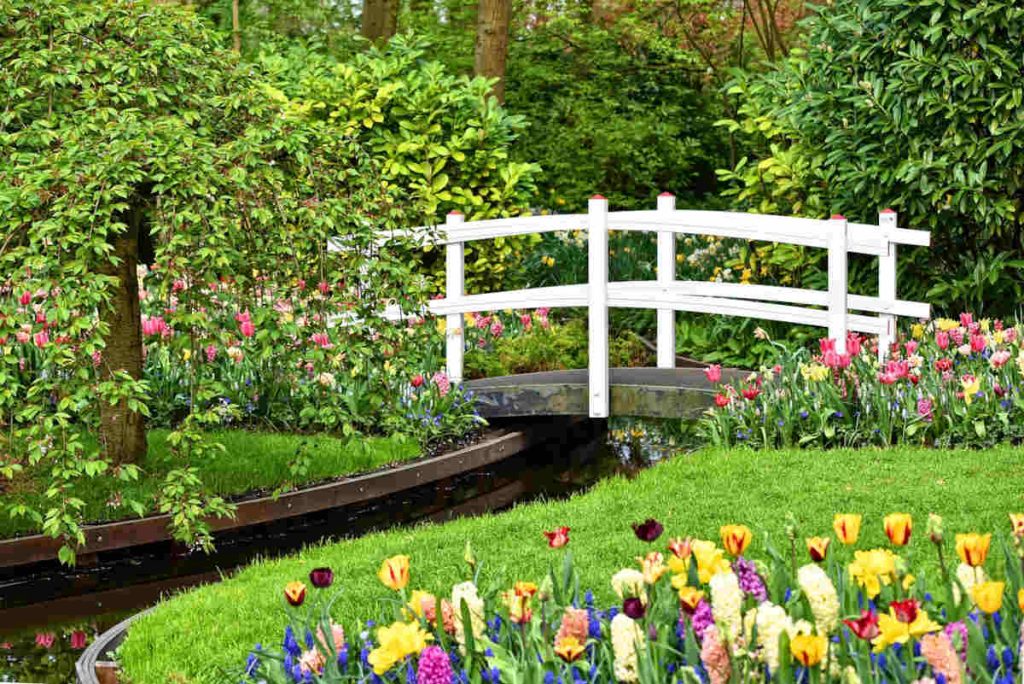Feng shui, the ancient Chinese art of harmonizing energy, extends far beyond the walls of your home. Your garden, that serene oasis just outside your door, is a powerful extension of your living space and holds immense potential for cultivating positive energy, or “chi.” By applying the principles of feng shui to your outdoor sanctuary, you can harness the natural forces at play and create a truly rejuvenating environment.
Gardens, with their lush greenery, flowing water, and earthy elements, are inherently imbued with a sense of tranquility and balance. However, by thoughtfully arranging these features according to feng shui guidelines, you can amplify their restorative effects and foster a deeper connection between your indoor and outdoor realms.
The Benefits of Applying Feng Shui in Your Garden
When you align your garden with the principles of feng shui, you open the door to a wealth of benefits that can positively impact your overall well-being. From enhanced creativity and productivity to improved health and relationships, the harmonious energy of a feng shui-inspired garden can have a profound influence on your life.
By cultivating a space that is in sync with the natural flow of chi, you can experience a greater sense of calm and relaxation, allowing you to truly unwind and recharge. The strategic placement of elements like water features, plants, and pathways can also promote the smooth circulation of energy, encouraging a sense of balance and clarity.
Moreover, a feng shui garden can serve as a sanctuary, a place where you can escape the stresses of daily life and reconnect with the rhythms of nature. This restorative connection can have a positive impact on your mental and emotional well-being, fostering a deeper appreciation for the natural world and its inherent wisdom.
Ready to harness the power of feng shui in your outdoor oasis? Let’s explore the five elements and how to incorporate them into your garden design.
The Five Elements and Their Significance in Your Garden
The foundation of Feng Shui rests on the philosophy of the Five Elements: Wood, Fire, Earth, Metal, and Water. Each element carries a distinct energy that, when balanced, creates a harmonious and vibrant environment. Let’s explore each element and how you can incorporate it into your garden to cultivate positive energy.
Wood Element: Growth and Expansion
The wood element in feng shui represents growth, vitality, and expansion. It is associated with the energy of new beginnings, creativity, and flexibility. Just as trees grow and branches extend upward, the wood element in your garden can promote personal and professional growth, abundance, and progress. It is linked to qualities such as vision, resilience, and adaptability.
To incorporate wood elements in your garden, consider the following:
- Color(s): Green and sometimes purples, not pastels
- Season: Spring
- Direction: East and southeast
To integrate the wood element, focus on lush, green plants and tall trees. Bamboo is an excellent choice, symbolizing strength and flexibility. You can also use wooden garden furniture, trellises, and fences to infuse this element into the space. Ensure your plants are healthy and thriving, as this reinforces the positive attributes of the wood element.
Fire Element: Energy and Passion
The fire element embodies passion, transformation, and energy. It is a symbol of warmth, illumination, and enthusiasm. Fire represents the energizing and transformative power of passion and creativity. Incorporating fire elements in your garden can help to increase your public profile, goals, and ambitions.
To incorporate fire elements in your garden, consider the following:
- Color(s): Red, orange, and yellow
- Season: Summer
- Direction: South
Introduce the fire element through vibrant colors like reds, oranges, and yellows. Flowering plants such as marigolds, tulips, and geraniums can add these hues. You might also incorporate actual fire features, like a fire pit or outdoor lanterns. Another way to add fire energy is through triangular shapes and pointed structures, symbolizing the element’s rising nature.
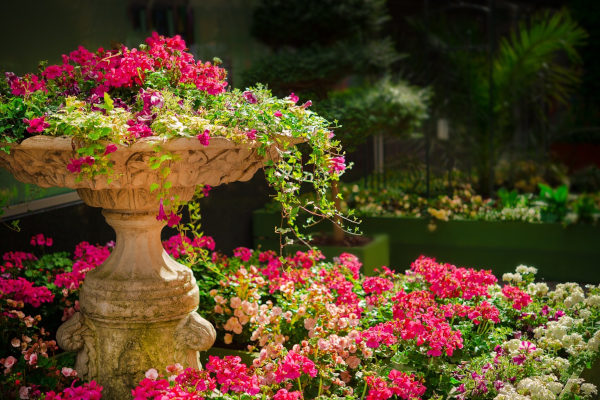
Earth Element: Stability and Balance
The earth element represents stability, grounding, and nourishment. It is associated with the energy of growth, stability, and comfort. The earth element in your garden can help to alleviate anxiety and stress by making you feel safe and protected. It is linked to qualities such as security, comfort, and nourishment.
To incorporate earth elements in your garden, consider the following:
- Color(s): Brown, beige, sierra, and other muted colors
- Season: End of summer
- Direction: Center, northeast, and southwest
Incorporate earth elements with natural stones, pottery, and terracotta planters. Earthy colors like browns, yellows, and beige can be introduced through flowers such as sunflowers and chrysanthemums. Garden beds with rich, fertile soil also embody the earth element, supporting the growth and health of your plants. Consider adding a small rock garden or using stone pathways to enhance this stabilizing energy.
Metal Element: Clarity and Precision
The metal element represents clarity, precision, and efficiency. It is associated with the energy of mental strength and intellectual abilities. Metal can help to stimulate mental clarity and focus. Incorporating metal elements in your garden can help to promote mental clarity and precision.
To incorporate metal elements in your garden, consider the following:
- Color(s): White, silver, gray, and black
- Season: Fall
- Direction: West and northwest
Introduce metal through garden sculptures, metal furniture, and decorative items like wind chimes and planters. Silver, white, and grey colors are associated with the metal element and can be included through flowering plants such as white lilies or silver-leaved plants like dusty miller. Circular shapes and arches also symbolize metal, so consider incorporating these forms into your garden design.
Water Element: Flow and Harmony
The water element represents flow, harmony, and spirituality. It is associated with the energy of spiritual growth and enlightenment. Water can help to promote relaxation and spiritual growth. Incorporating water elements in your garden can help to create a sense of flow and harmony.
To incorporate water elements in your garden, consider the following:
- Color(s): Blues
- Season: Winter
- Direction: North
Incorporate water elements with features like fountains, ponds, or small waterfalls. These elements should be placed thoughtfully to ensure the flow of water is harmonious and gentle. Plants that thrive in moist conditions, such as water lilies and lotus flowers, also embody this element. Additionally, blue and black colors can represent water, so consider plants with blue flowers or adding decor in these shades.
The Five Elements and their significance in Feng Shui gardens
| Element | Significance | Characteristics | Benefits | Suitable Plants | Recommended Placements |
| Wood | Growth, expansion | Vertical, upward growth | Vitality, new beginnings, creativity | Bamboo, flowering trees, herbs | East, southeast, and south areas |
| Fire | Energy, passion | Bright, vibrant colors | Transformation, enthusiasm, warmth | Red flowers, ornamental grasses | South, northeast, and southwest areas |
| Earth | Stability, balance | Horizontal, flat surfaces | Nurturing, grounding, security | Groundcovers, succulents, herbs | Center and southwest areas |
| Metal | Clarity, precision | Metallic colors, round shapes | Strength, organization, clarity | White flowers, succulents, rocks | West and northwest areas |
| Water | Flow, harmony | Free-flowing, reflective surfaces | Abundance, flexibility, purification | Water plants, aquatic plants, blue flowers | North and southeast areas |
Related reading: 17 External Features of a House that are Bad Feng Shui and How to Fix It – Opens in new tab
Feng Shui Your Garden: Placing Plants Strategically
Plants are more than just decorative elements in your garden; they are living beings that carry and influence energy. Choosing plants based on their energy properties can significantly impact the overall Feng Shui of your garden.
How Plants Can Influence Your Garden’s Energy
Each plant has its unique energy that can contribute to the balance and harmony of your garden. For instance, plants with soft, rounded leaves tend to promote gentle, nurturing energy, while those with spiky or thorny leaves can create more aggressive, protective energy. Flowering plants introduce vibrant, uplifting energy, while evergreens provide stability and continuity.
When selecting plants, consider their symbolic meanings in Feng Shui. For example, bamboo symbolizes resilience and flexibility, making it an excellent choice for fostering growth and strength. On the other hand, chrysanthemums represent longevity and joy, adding a positive and cheerful vibe to your garden.
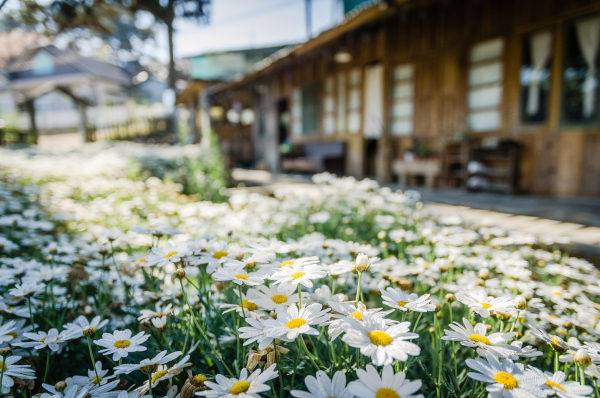
Grouping Plants for Maximum Effect
Strategically grouping plants can enhance their energy and create a more harmonious garden space. By understanding the relationships between different plants and how they interact, you can maximize the positive effects of their energy.
The Power of Plant Arrangements
Arranging plants in clusters or specific patterns can help amplify their energy. For instance, grouping plants with similar energy properties can create a strong, cohesive force in that area of your garden. A cluster of flowering plants can generate a vibrant, joyful energy, while a group of evergreens can provide a sense of stability and protection.
You can also use plant arrangements to create specific energy zones in your garden. For example, placing taller plants or trees towards the back of your garden and shorter plants in the front can create a sense of depth and perspective, enhancing the flow of energy. Additionally, arranging plants in flowing, natural patterns rather than rigid, straight lines helps to encourage a smoother, more harmonious energy flow.
Read the paper: “Landscape Design: Arranging Plants in The Landscape” by Gail Hansen from the University of Florida. DOI: 10.32473/edis-ep449-2011
Avoiding Plants with Negative Energy
While many plants can enhance your garden’s energy, some may introduce negative or disruptive energy. Being mindful of these plants can help you maintain a balanced and harmonious outdoor space.
Certain plants, especially those with sharp thorns or spiky leaves, can create a sense of discomfort or aggression. Plants like cacti, although popular for their low maintenance, should be used sparingly and placed thoughtfully to avoid generating too much aggressive energy. Thorny bushes near seating areas can also create a sense of unease, detracting from the garden’s tranquility.
Additionally, plants that are struggling or unhealthy can introduce stagnant or negative energy. Regular maintenance, including pruning and removing dead or diseased plants, is essential to ensure that the energy in your garden remains vibrant and positive.
Optimal plant placement based on Feng Shui principles
| Area/Zone | Ideal Plants | Benefits | Energy Enhancement Tips |
| North | Water plants, blue and black flowers | Supports career and life path | Add a small water feature to enhance water energy. |
| East | Tall, vertical plants, bamboo, ferns | Promotes health and family harmony | Incorporate wood elements like wooden trellises. |
| Southeast | Flowering plants, money plants, herbs | Enhances wealth and abundance | Use green and purple plants to attract prosperity. |
| South | Red flowers, ornamental grasses, citrus trees | Boosts fame and recognition | Add a fire element, such as a small lantern or light feature. |
| Southwest | Yellow flowers, succulents, ground covers | Encourages love and relationships | Use earth tones and heart-shaped plants. |
| West | White flowers, round-leaf plants, metal ornaments | Fosters creativity and children | Add metallic elements like garden sculptures or metal pots. |
| Northwest | White, gold, and silver flowers, aromatic herbs | Supports helpful people and travel | Use circular shapes and metal decor to enhance energy. |
| Center | Ground covers, yellow flowers, potted plants | Enhances overall balance and stability | Use earthy colors and keep this area clutter-free. |
| Northeast | Small shrubs, evergreens, crystal plants | Promotes knowledge and self-cultivation | Incorporate stone elements or a small rock garden. |
Related reading: Surrounding Buildings that are BAD Feng Shui and How to Overcome Their Effect – Opens in new tab
Feng Shui Your Garden: Adding Decorative Elements
Now that you’ve strategically placed your plants, let’s add another layer of intention with decorative elements. These elements not only enhance the visual appeal of your garden but also introduce symbolic meaning and influence the flow of energy.
Using Statues and Sculptures
Statues and sculptures can greatly enhance the aesthetic and energetic qualities of your garden. When chosen thoughtfully, these elements can add layers of meaning and symbolism that align with Feng Shui principles.
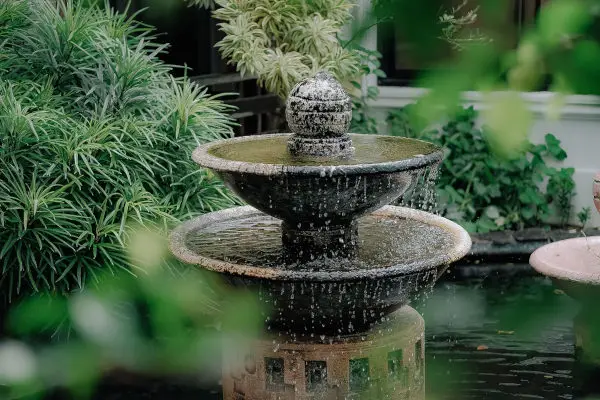
The Symbolism Behind Garden Decor
In Feng Shui, statues and sculptures are more than mere decorations; they carry symbolic meanings that can influence the energy of your garden. For example, statues of animals such as turtles, cranes, or dragons each have unique symbolic attributes. A turtle statue represents protection and longevity, while a crane symbolizes wisdom and peace. Dragons are powerful symbols of strength and good fortune.
When placing statues, consider their orientation and location. Positioning a statue facing the entrance can offer protection and welcome positive energy into the garden. Sculptures that depict natural elements or abstract forms can also enhance the garden’s energy by reflecting and amplifying specific Feng Shui elements like wood, metal, or earth.
Incorporating Water Features
Water features are a fundamental aspect of Feng Shui, symbolizing abundance, flow, and tranquility. The presence of water in your garden can create a soothing and harmonious environment that nurtures both the mind and spirit.
The Calming Effect of Water in Your Garden
Water features, such as fountains, ponds, or waterfalls, can significantly enhance the energy of your garden. The sound and movement of water introduce a calming and serene atmosphere, which can help reduce stress and promote relaxation. Flowing water also encourages the circulation of Chi, ensuring that energy does not become stagnant.
When incorporating water features, consider their placement carefully. In Feng Shui, the direction and flow of water are important. Water flowing towards your home symbolizes incoming wealth and prosperity, while water flowing away can have the opposite effect. It’s also beneficial to ensure that the water remains clean and clear, as stagnant or murky water can negatively impact the energy of your garden.
Adding Lighting for Ambiance
Lighting plays a crucial role in shaping the atmosphere and energy of your garden. Proper lighting not only enhances the beauty of your outdoor space but also contributes to a balanced and harmonious environment.

The Impact of Lighting on Your Garden’s Energy
Lighting can influence the energy flow in your garden by highlighting key areas and creating a welcoming ambiance. Soft, warm lighting can create a peaceful and relaxing atmosphere, while brighter lights can energize and uplift the space. Consider using solar-powered lights, which are both eco-friendly and efficient.
Pathway lights can guide energy flow smoothly through the garden, preventing areas of stagnation. Uplighting can be used to accentuate trees and taller plants, adding depth and dimension to your garden at night. String lights or lanterns can bring a magical, festive feel, perfect for social gatherings or quiet evenings.
When positioning lights, aim for a balanced distribution to avoid overly bright or dark spots. Avoid harsh, direct lighting, which can create sharp shadows and disrupt the garden’s harmony. Instead, opt for diffused or ambient lighting to maintain a gentle, soothing energy throughout your outdoor space.
The symbolism behind different garden decorations in Feng Shui
| Decorative Element | Symbolism | Recommended Placement | Effects on Garden Energy |
| Statues and Sculptures | Represents stability, protection, and power | Near entrances, central areas | Enhances grounding energy and security |
| Water Features | Symbolizes flow, abundance, and purification | North, east, or southeast areas | Promotes prosperity, career growth, and health |
| Wind Chimes | Brings positive vibrations and clarity | Near entrances, in trees, patios | Attracts positive energy and dispels negativity |
| Garden Lanterns | Represents illumination and guidance | Along pathways, near seating areas | Creates warmth, invites clarity, and enhances safety |
| Bird Baths/Feeders | Attracts birds, symbolizing freedom and joy | Near windows, in open spaces | Enhances liveliness and joy in the garden |
| Mirrors | Reflects and amplifies energy | On walls, near water features | Expands space and increases energy flow |
| Pathway Stones | Represents stability and direction | Along garden paths, entrances | Guides energy flow and provides clear direction |
| Metal Ornaments | Symbolizes clarity and precision | West and northwest areas | Enhances creativity and helpful people energy |
| Crystals | Symbolizes clarity, healing, and energy focus | Near water features, meditation areas | Amplifies positive energy and promotes healing |
| Garden Bells | Clears negative energy, promotes clarity | Near entrances, in garden corners | Keeps energy moving and purifies the space |
🍀 Our “Feng Shui Master” app is your trusted companion, offering a useful guide to implementing Feng Shui principles. Try it now!
Pathways and Walkways for Smooth Energy Flow in Feng Shui Gardens
Imagine strolling through your garden on a winding path, each step inviting you deeper into a tranquil oasis. In Feng Shui, pathways are more than just functional; they represent the flow of energy throughout your garden. Let’s explore how to design pathways that promote a smooth and positive energy flow.
Gentle Curves and Winding Paths: Avoiding Straight Lines and Dead Ends
Paths with gentle curves and winding routes are preferred in Feng Shui because they encourage a smooth, natural flow of energy. Straight lines and sharp angles can create harsh, fast-moving energy that may disrupt the harmony of your garden. Curved paths, on the other hand, allow Chi to meander gently, creating a more relaxed and balanced atmosphere.
Avoid creating dead ends in your garden paths, as these can cause energy to stagnate. Ensure that your walkways lead to significant areas within your garden or loop back on themselves to maintain a continuous flow of energy. This design not only enhances the aesthetic appeal of your garden but also supports the harmonious circulation of Chi.
Importance of Materials: Natural Stones, Gravel, and Stepping Stones
The materials you choose for your garden pathways play a vital role in the overall energy of the space. Natural materials are particularly effective in creating a balanced and harmonious environment.
Natural Stones: Natural stones bring an earthy, grounding energy to your garden. They symbolize stability and permanence, making them an excellent choice for pathways. Stones can be used in various forms, from large stepping stones to gravel pathways, each contributing to the garden’s stability and balance.
Gravel: Gravel paths provide a pleasing texture and sound underfoot, enhancing the sensory experience of your garden. The crunch of gravel can create a rhythmic, soothing sound that complements the natural surroundings. Gravel also allows for good drainage, ensuring that your paths remain functional and attractive in various weather conditions.
Stepping Stones: Stepping stones are another wonderful option for garden pathways. They offer a practical and visually appealing way to navigate your garden while maintaining a close connection to nature. Stepping stones can be arranged in meandering patterns, encouraging a mindful and leisurely walk through your garden.
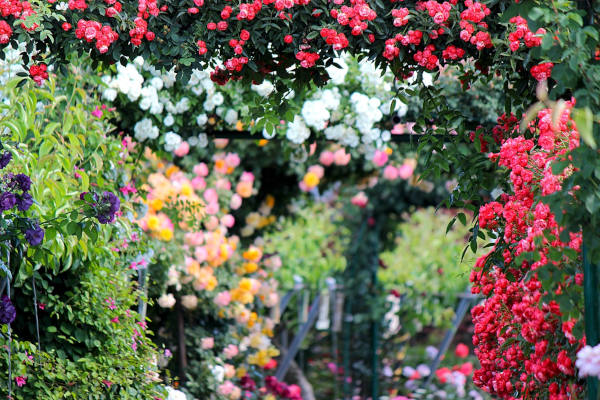
Keeping the Path Clear: Removing Obstacles and Debris
Ensure that your garden paths are free from obstacles, such as overgrown plants, fallen branches, or misplaced garden tools. These obstructions can block the flow of Chi, creating stagnant energy and disrupting the harmony of your garden. Regularly trim back plants and remove any debris to keep paths clear and accessible.
Additionally, consider the placement of garden furniture and decorative items along pathways. While these elements can enhance the beauty of your garden, they should not impede movement or create clutter. Thoughtfully positioned benches, planters, and statues can complement the flow of energy rather than hinder it.
Related reading: Feng Shui Made Easy: Discover the Power of Succulents in Your Home! – Opens in new tab
Using Stones and Rocks in Feng Shui Gardens
Stones and rocks are nature’s enduring monuments, symbolizing strength, stability, and grounding energy. In Feng Shui garden design, these elements play a crucial role in creating a sense of security and promoting positive energy flow.
Placing Stones for Stability and Protection
- Strategic Placement: The placement of stones and rocks in your garden has a significant impact on its energy. Larger rocks placed in the north or northwest areas of your garden, which correspond to the Metal element, enhance feelings of stability and support. Groupings of smooth, round stones near seating areas or pathways create a sense of peace and tranquility.
- Creating Boundaries: Rocks can also be used to define specific areas within your garden. A low rock wall surrounding a meditation space or vegetable patch can provide a sense of enclosure and protection.
- Natural Beauty: Beyond their symbolic meaning, stones and rocks add natural beauty and texture to your garden design. Use a variety of sizes, shapes, and colors to create a visually interesting focal point or a calming rock garden.
- Large stones placed in the north area of your garden represent the Water element and symbolically offer protection. The north zone is associated with career and life path, and the stability of stones can support your endeavors.
- Number: Odd numbers of stones are considered auspicious in Feng Shui. Try groupings of three or five stones to create a sense of balance and stability.
When selecting stones, consider their size, shape, and color. Large, round stones with smooth textures generally emit more calming energy, while smaller, jagged stones might introduce a more stimulating energy. Choose stones that resonate with you and complement the overall feel you desire for your garden.
Remember, incorporating Feng Shui principles is all about creating a harmonious and balanced space that reflects your personal intentions. Feel free to experiment with the placement of stones and rocks to find what resonates most with you and your garden’s unique energy.

Lighting Your Garden with Feng Shui Principles
As the sun sets, your garden doesn’t have to disappear into darkness. Strategic lighting, guided by Feng Shui principles, can transform your outdoor space into an inviting haven that extends enjoyment well into the evening. Let’s explore how to choose and position lights to enhance the energy and ambiance of your garden.
Choosing and Positioning Garden Lights
When selecting and positioning garden lights, consider the following Feng Shui guidelines:
- Color Temperature: Opt for warm, soft lighting rather than harsh, bright white light. Warm color temperatures (2700K-3000K) are more inviting and promote a sense of coziness and relaxation.
- Lighting Fixtures: Choose lighting fixtures that complement the natural elements in your garden, such as wood, stone, or metal. This helps to create a cohesive and balanced aesthetic.
- Placement: Position lights to guide the flow of energy through your garden. Avoid placing lights in a straight line, as this can disrupt the natural flow of chi. Instead, use a meandering or curved layout to encourage a smooth and harmonious energy.
- Lighting Levels: Ensure that the lighting levels in your garden are not too bright or too dim. Overly bright lighting can be jarring and disruptive, while dim lighting can create a sense of stagnation. Aim for a soft, ambient glow that enhances the natural beauty of your garden.
- Uplighting: Consider using uplighting to highlight specific features, such as trees or architectural elements. Uplighting can create a sense of depth and drama, while also drawing the eye upward and promoting a feeling of expansiveness.
- Pathway Lighting: Install lighting along garden paths and walkways to guide the flow of energy and create a sense of safety and security.
- Water Features: If you have a water feature, such as a fountain or pond, be sure to light it up to enhance the calming and reflective qualities of the water.
Want to learn more about Feng Shui? Take a look at these Courses and Books – Aff.link
Feng Shui for Garden Entrances
The entrance to your garden is more than just a passageway; it’s the first impression and sets the tone for your entire outdoor sanctuary. According to Feng Shui principles, a well-designed entrance can act as a magnet, attracting positive energy and inviting good fortune into your garden.
Designing a Welcoming Entrance
To harness positive energy at your garden entrance, consider the following Feng Shui guidelines:
- Clear and Open Pathway: Ensure that the pathway leading to your garden entrance is clear and unobstructed. Clear away any debris, overgrown plants, or clutter that may block the flow of Chi. A well-maintained pathway encourages a smooth and inviting transition into your garden.
- Balance and Symmetry: Symmetry promotes balance and harmony in Feng Shui. Design your entrance with balanced elements such as matching planters or symmetrically placed statues. This creates a sense of order and tranquility that welcomes visitors and encourages positive energy flow.
- Use of Natural Materials: Incorporate natural materials, such as wood, stone, or bamboo, into your entrance design. These materials resonate with the earth element in Feng Shui, symbolizing stability, grounding, and connection to nature. Wooden gates, stone pillars, or bamboo fences can create a sense of authenticity and serenity at the entrance.
- Enhance with Plants and Flowers: Introduce plants and flowers around the entrance to soften the transition between the exterior and interior spaces. Choose vibrant, healthy plants with rounded leaves and uplifting colors to attract positive energy. Avoid plants with sharp or spiky leaves near the entrance, as they can create harsh or aggressive energy.
- Symbolic Decorations: Incorporate symbolic decorations that reflect your intentions and aspirations for the garden. For example, a wind chime or bell hung near the entrance can attract positive energy and dispel negativity. A statue or sculpture that holds personal significance or cultural symbolism can also enhance the entrance’s energy.
- Ensure Adequate Lighting: Illuminate the entrance with gentle, welcoming light to guide visitors and enhance nighttime visibility. Soft, warm lighting creates a welcoming atmosphere and encourages positive energy to flow into your garden. Avoid harsh or overly bright lights that may disrupt the garden’s natural beauty and serenity.
- Maintain Cleanliness and Order: Regularly maintain the cleanliness and orderliness of your garden entrance. Trim overgrown plants, sweep pathways, and keep decorations tidy to uphold a sense of clarity and organization. A well-kept entrance promotes positive energy and leaves a lasting impression on visitors.

Inviting Seating Areas in Feng Shui Gardens
Seating areas in your garden serve as tranquil retreats where you can relax, unwind, and connect with nature. The comfort and arrangement of your garden furniture play a significant role in fostering a sense of connection and well-being.
Comfortable Seating
Choose seating that prioritizes comfort and relaxation. Opt for cushioned chairs, benches with ergonomic designs, or hammocks that provide ample support. Comfortable seating encourages you and your guests to linger longer in the garden, enjoying its peaceful ambiance and natural beauty.
Consider the placement of seating areas in quiet corners or under shade-providing trees to create cozy retreats that invite contemplation and relaxation. Incorporate cushions and throws in earthy tones or soothing colors to enhance comfort and complement the garden’s natural elements.
Material Matters: Choosing Furniture that Complements the Elements
The materials used in your garden furniture can harmonize with the five elements of Feng Shui, enhancing the overall energy and aesthetic appeal of your outdoor space.
Complementing the Elements
Wooden furniture resonates with the wood element, symbolizing growth and vitality. Choose sustainably sourced teak or cedar furniture to bring warmth and natural beauty to your garden. Metal furniture, such as wrought iron or stainless steel, embodies the metal element, promoting clarity and precision. Incorporate metal chairs or tables with intricate designs to add a touch of elegance and structure.
For earth element representation, opt for furniture made from stone, concrete, or clay. These materials provide stability and grounding, creating a solid foundation for your seating areas. Water element can be symbolized with furniture featuring flowing lines or water-resistant materials like wicker or rattan. Lastly, fire element can be incorporated through furniture in vibrant colors or with angular designs that evoke energy and passion.
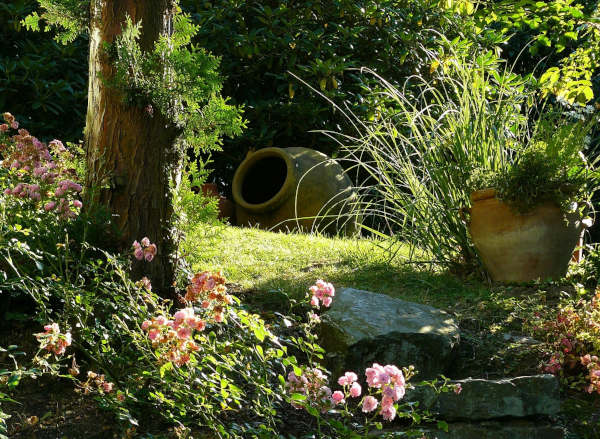
The Power of Placement: Arranging Seating for Conversation and Relaxation
The placement of your seating areas significantly impacts the flow of energy and the overall ambiance. Here are some Feng Shui tips for optimal arrangement:
- Facing the View: Position your seating to allow you to gaze upon the most beautiful aspects of your garden. This could be a trickling water feature, a vibrant flower bed, or a majestic tree.
- Creating Conversation Areas: Arrange seating in a circular or semi-circular formation to encourage conversation and social interaction.
- Promoting Relaxation: Place some seating areas in secluded corners or under the shade of trees for peaceful moments of reflection and solitary enjoyment.
- Avoiding Negative Zones: Avoid placing seating directly in line with the garden entrance or under dead tree branches, as these can create a sense of unease.
- Avoiding Dead Ends: Don’t place seating directly in front of a wall or fence, creating a sense of enclosure. Instead, position chairs with a view of the garden or a pathway, encouraging a sense of openness and flow.
Feng Shui Tips for Small Gardens
Small gardens present unique opportunities to create intimate and harmonious outdoor spaces using Feng Shui principles. By optimizing every inch of your garden, you can cultivate a serene and balanced environment that feels spacious and inviting.
Here are some clever ways to maximize your limited space and cultivate a sense of abundance:
- Mirrors for Expansion: Strategically placed mirrors can create an illusion of a larger space. Position a mirror to reflect a beautiful garden feature or a lush plant wall, adding depth and dimension to your garden.
- Vertical Gardening: Utilize vertical space with hanging planters, climbing vines, or wall-mounted herb gardens. This approach allows you to incorporate more greenery without sacrificing ground space.
- Curved Pathways: As discussed earlier, curved pathways are essential in Feng Shui. They create a sense of spaciousness and encourage exploration even in a limited area.
- Focal Points: Create a focal point in your garden, like a small water feature, a birdbath, or a piece of statement art. This draws the eye and makes the space feel more expansive.
- Scale Matters: Oversized furniture or decorations can overwhelm a small space. Choose furniture and decor that’s proportionally balanced to the size of your garden.
- Declutter Regularly: Clutter disrupts the flow of energy in any space. Regularly remove fallen leaves, dead foliage, and unnecessary objects to maintain a clean and inviting atmosphere.
Additional Space-Saving Tips:
- Multi-functional Furniture: Opt for furniture that serves multiple purposes, like a storage bench or a table with built-in planters. This helps maximize functionality in a limited space.
- Light and Color: Lighter colored walls, fences, or furniture can make your garden feel more open and airy. Introduce pops of color with vibrant flowers or brightly painted planters to add visual interest without overwhelming the space.

Feng Shui on a Budget: Creating Harmony Without Breaking the Bank
Creating a Feng Shui garden doesn’t require a hefty investment. By embracing resourcefulness and focusing on intention, you can cultivate a beautiful and harmonious space that nourishes your well-being. Here are some creative ways to achieve Feng Shui magic on a budget:
Repurposing and Upcycling: Giving Old Items New Life
- Treasure in the Trash: Look for discarded items with potential. An old watering can can become a charming planter, while a rusty rake head can be transformed into a unique wall hanging.
- Creative Containers: Think outside the box for plant pots. Repurpose old buckets, baskets, or even mismatched teacups for a touch of whimsical charm.
- Upcycled Furniture: Give old furniture a new lease on life with a fresh coat of paint or reupholstering with colorful fabrics. This adds a personal touch to your seating area while adhering to budget-friendly principles.
Utilizing Natural Materials: Stones, Rocks, and Branches
Nature’s bounty provides an abundance of free materials to enhance your Feng Shui garden.
- Stone Serenity: Collect smooth stones from your yard or local park to create a calming rock garden or use them as decorative accents around plants.
- Branching Out: Gather fallen branches and create a natural border around your garden or use them to build a rustic trellis for climbing vines.
- Earthy Elegance: Utilize fallen logs or branches as makeshift seating or side tables, adding a touch of organic beauty to your space.
Budget-friendly decor ideas for Feng Shui gardens
| Budget-Friendly Decor Idea | Description | Benefits | Implementation Tips |
| Repurposed Items | Using old items in new ways | Cost-effective, eco-friendly | Turn old furniture into planters, use mason jars for lanterns |
| Natural Materials | Incorporating stones, rocks, and branches | Enhances natural energy, easy to find | Collect stones for pathways, use branches for garden art |
| DIY Water Features | Creating simple water features | Promotes tranquility, easy to customize | Use a small pump and basin for a DIY fountain |
| Homemade Wind Chimes | Crafting wind chimes from household items | Brings positive energy, personal touch | Use old cutlery, shells, or beads to create unique chimes |
| Painted Rocks | Decorating rocks with Feng Shui symbols | Adds color and symbolism, inexpensive | Paint rocks with meaningful symbols or colors |
| Upcycled Containers | Using recycled containers as plant pots | Reduces waste, unique decor | Use tin cans, old tires, or wooden crates as planters |
| Simple Garden Paths | Creating paths with gravel or mulch | Defines spaces, improves energy flow | Lay down a weed barrier, then add gravel or mulch |
| Plant Swaps with Friends | Trading plants with neighbors or friends | Free plants, diverse garden | Organize a plant swap event to share cuttings and seedlings |
| Homemade Garden Signs | Crafting signs from recycled wood | Personalizes garden, enhances aesthetics | Paint or carve old wood to create custom signs |
| Composting | Making your own compost from kitchen waste | Fertilizes garden, reduces waste | Set up a compost bin or pile in a corner of your garden |
Related reading: Feng Shui Tips for Good Luck: Simple Practices for Big Results – Opens in new tab
Common Feng Shui Mistakes to Avoid in Your Garden
Now that you’re equipped with the knowledge to design a beautiful and harmonious Feng Shui garden, let’s explore some common mistakes to avoid. By being mindful of these pitfalls, you can ensure your outdoor space continues to nourish your well-being and cultivate positive energy.
Sharp Objects and Pointy Plants: Creating Negative Energy
Sharp objects and plants with pointed leaves are believed to generate Sha Chi, or negative energy, in Feng Shui. While a single cactus might add a touch of desert charm, avoid placing too many sharp or pointy plants near seating areas or pathways. Opt for plants with rounded leaves and softer shapes to promote a sense of tranquility and relaxation in your garden.
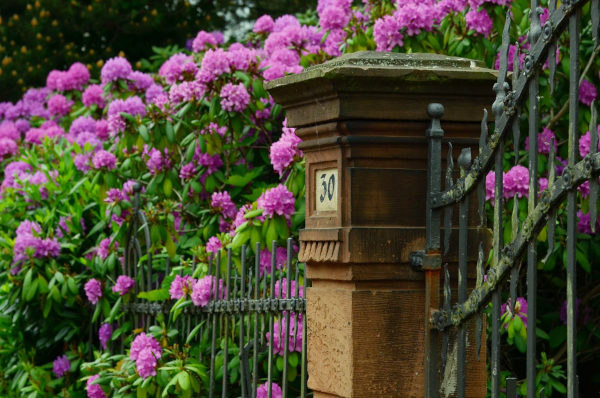
Thorny Bushes Near Seating Areas: Discomfort and Stagnant Energy
Thorny bushes may add a touch of privacy, but in Feng Shui, they can represent obstacles and stagnant energy. Avoid planting thorny bushes too close to seating areas or walkways, where they can create discomfort and disrupt the flow of Chi. If you love the look of thorny plants, consider placing them strategically at the perimeter of your garden, where they can serve a symbolic purpose of protection.
Placing Fountains in the Wrong Zone
Water features are a wonderful addition to any garden, and in Feng Shui, they represent tranquility and prosperity. However, the placement of your water feature is crucial. Avoid placing fountains in the South zone of your garden, which is associated with fire energy. This clash of elements can disrupt the flow of Chi. Instead, consider the North zone, which governs water energy, or the East zone, which represents growth and new beginnings.
In addition, ensure that the size and design of the fountain complement the scale of your garden. Choose a style that resonates with the overall aesthetic and supports the garden’s natural elements.
🍀 Our “Feng Shui Master” app is your trusted companion, offering a useful guide to implementing Feng Shui principles. Try it now!
Maintaining Your Feng Shui Garden
Just like any living space, your Feng Shui garden thrives with consistent care and attention. Regular maintenance ensures your plants flourish, positive energy flows freely, and your outdoor sanctuary continues to nourish your well-being. Here are some key practices to cultivate a balanced and vibrant garden:
Tips for Regular Maintenance
- Regular Pruning: Regular pruning is essential to maintain the balance and harmony of your Feng Shui garden. Prune plants to maintain their shape and promote healthy growth. This also helps to remove any negative energy that may be accumulating.
- Cleaning and Maintenance: Keep your garden clean and well-maintained. Remove any debris, dead plants, or broken items to ensure a smooth flow of energy. Regularly clean and maintain water features, such as fountains or ponds, to keep the water clean and flowing.
- Seasonal Adjustments: Adjust your garden according to the seasons. For example, in the spring, prune plants to promote new growth. In the summer, trim back plants to maintain their shape. In the fall, clean up dead leaves and debris. In the winter, prune plants to prepare them for the next growing season.
Pruning and Trimming for Balance
- Pruning for Balance: Pruning is essential in Feng Shui to maintain balance and harmony. Prune plants to maintain their shape and promote healthy growth. This also helps to remove any negative energy that may be accumulating.
- Trimming for Shape: Trim plants to maintain their shape and promote healthy growth. This also helps to remove any negative energy that may be accumulating.
- Pruning for Energy Flow: Prune plants to promote a smooth flow of energy. Remove any dead or dying plants to ensure a clear flow of energy.
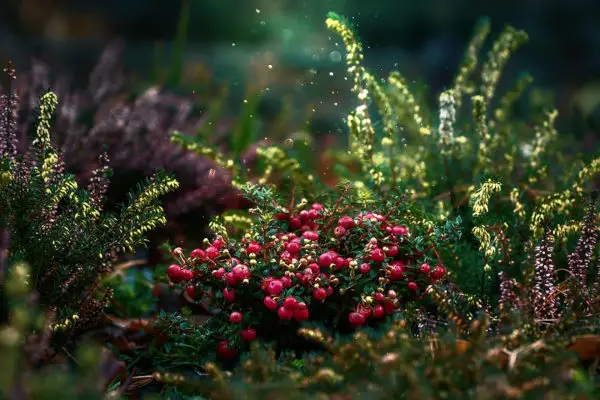
Seasonal Adjustments for Optimal Energy
As the seasons change, so too should your garden care routine. Here are some tips for seasonal adjustments:
- Spring: Prepare your garden for growth by fertilizing soil, planting new additions, and refreshing mulch. Trim back winter-damaged plants and rejuvenate dormant areas to encourage renewal and vitality.
- Summer: Maintain hydration with regular watering, especially during hot weather. Prune summer-flowering plants after they bloom to promote continued growth and vitality. Shield sensitive plants from excessive heat or direct sunlight to prevent stress.
- Autumn: Clear fallen leaves and debris to prevent blockages and promote energy flow. Trim back overgrown plants and prepare for cooler temperatures by insulating sensitive species. Harvest fruits, vegetables, and herbs to celebrate abundance and nourishment.
- Winter: Protect vulnerable plants from frost and extreme cold by covering them with blankets or mulch. Prune dormant trees and shrubs to maintain shape and encourage healthy growth come spring. Focus on indoor gardening projects or plan for the upcoming growing season.
Seasonal maintenance schedule for Feng Shui Gardens
| Season | Tasks |
| Spring | – Prune dead branches and shape plants for growth. – Fertilize soil to support new growth. – Plant new additions and refresh mulch. – Clear debris and prepare garden for growing season. |
| Summer | – Water plants regularly, especially during hot weather. – Trim back overgrown plants and deadhead flowers. – Shield sensitive plants from excessive heat or direct sunlight. – Monitor and maintain water features to prevent stagnation. |
| Autumn | – Clear fallen leaves and debris to prevent blockages. – Prune summer-flowering plants after blooming. – Prepare plants for cooler temperatures and protect from frost. – Harvest fruits, vegetables, and herbs as appropriate. |
| Winter | – Protect vulnerable plants from frost and extreme cold. – Prune dormant trees and shrubs to maintain shape. – Insulate sensitive plants with mulch or coverings. – Plan and prepare for upcoming spring growth and projects. |
End Words
In conclusion, creating a Feng Shui garden is a powerful way to enhance the energy and harmony of your outdoor space. By incorporating the principles of Feng Shui, you can create a garden that not only looks beautiful but also promotes a sense of balance, relaxation, and well-being.
From choosing the right plants and materials to incorporating water features and decorative elements, there are many ways to create a Feng Shui garden that suits your style and needs. By following the tips and guidelines outlined in this article, you can create a garden that is not only aesthetically pleasing but also harmonious and beneficial for your overall well-being.
Want to learn more about Feng Shui? Take a look at these Courses and Books – Aff.link
Stay in Touch
 Join our newsletter by using the forms on this website or click here!
Join our newsletter by using the forms on this website or click here! Follow us on Google News
Follow us on Google News Follow us on Facebook
Follow us on Facebook
Featured Image by 👀 Mabel Amber, who will one day from Pixabay

